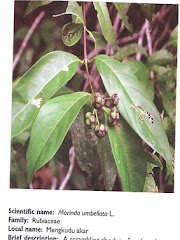Timber harvesting can have long-term effects on your farm and the surrounding landscape; the subsequent land use may have even greater impacts. These impacts relate to runoff, gully erosion, in-field erosion, streams, watertables, wildlife habitat, aesthetics and economics. The nature and extent of the impacts will depend on the logging practices, subsequent land use and landscape characteristics.
Runoff and Gully Erosion
Gully erosion and other runoff related problems such as flooding can occur when surface runoff from rainfall or snowmelt becomes extreme. By clearing forested land, you may increase the risk of runoff problems for you and your neighbours.
On forested land, the potential for such problems is low. The trees intercept rain and dissipate rainfall energy, reducing the volume and energy of rain reaching the forest floor. Water on the forest floor moves within the litter cover layer which slows water movement. This allows more water to infiltrate the soil, leaving less water to contribute to surface runoff.
On cleared land, however, watersheds of only a few hundred acres can generate sufficient runoff to wash out culverts or flood low lying land and to form gullies too large to repair with farm equipment.
Farm watersheds, because of their small size, can respond more quickly to runoff events than large, regional watersheds. Even local showers can produce rapid runoff, so the risk of gully erosion and flooding can be high. In addition, as more small watersheds within a regional watershed are cleared, the whole regional watershed becomes more sensitive to runoff. This increases the potential for flooding, erosion, sedimentation and water quality degradation throughout the area.
Logging on a farm watershed needs careful planning and management to reduce these negative effects. If a cleared forest is regenerated promptly, the impact on the watershed can be minimized.
In-Field Water Erosion
In-field water erosion refers to soil removal by raindrops hitting the ground and runoff flowing as sheet flow or in small rills. Characteristics that increase the risk of in-field erosion include:
• steep slopes or long, uninterrupted slopes;
• sandy or silty soils;
• soils without a protective vegetative cover;
• reduced infiltration resulting from low permeability at or near the soil surface (due to soil crusting, frozen soil, fine textured soil, shallow soil or other characteristics); and
• soils low in organic matter.
Forested areas in Alberta typically have Gray Luvisol (Gray Wooded) soils which have many of these characteristics. Most forested landscapes in the settled part of Alberta are gently to moderately sloping and have minimal risk of erosion unless converted to cultivated land.
The litter and tree residue remaining immediately after logging usually protect the soil from in-field erosion, unless logging practices result in excessive surface disturbance. Land developed to pasture is also reasonably well protected if the pasture is properly managed to maintain good ground cover. On cultivated land, however, slopes greater than 5 per cent are susceptible to in-field erosion. Long slopes (greater than 800 m (2,600 ft) in length) are susceptible to erosion at slopes as low as 2 per cent.
Wind Erosion
Depending on the subsequent land use, logging can also increase the risk of soil erosion by wind. Conditions promoting wind erosion include:
• sparse or absent vegetative cover,
• dry, loose and finely aggregated soil,
• smooth soil surface,
• large fields, and
• high velocity winds.
Vegetative cover, including crop residue, is particularly important in reducing wind erosion. It anchors the soil, increases surface roughness, reduces wind speed, conserves soil moisture and adds organic matter which helps bind the soil particles into aggregates. Clearing and cultivating land removes the vegetative cover for part or all of the year. Large, open fields are especially erosion prone because long, unobstructed distances allow the wind's velocity to increase.
Streams
Tree roots help stabilize stream banks, and tree shade helps reduce algae growth in streams in some cases. Streamside vegetation also traps sediments before they reach the stream and absorbs nitrates from groundwater. Clearing trees removes these benefits.
Stream banks can also be damaged by equipment or livestock trampling, resulting in reduced water quality and increased sedimentation. In extreme cases, stream banks may be destroyed, and the diverted stream flow can cause flooding and sedimentation in new locations.
Trees left standing after selective harvesting are susceptible to windthrow. Excessive windthrow next to streams can reduce bank stability and increase sedimentation.
Watertables
Trees act as living pumps that draw moisture out of the soil and release it into the atmosphere. At the same time, tree shade and shelter may prevent excessive evaporation from dry sites. Depending on topography, soil and availability of water, clearing trees can have one or more of the following effects on watertables and associated site conditions:
• waterlogged soils that are difficult to reforest or crop,
• reduced soil moisture and drying of existing wetlands,
• fluctuating watertables causing increased soil salinity or changes in soil pH, or
• problems with water quantity or quality in existing dugouts, springs or wells.
Wildlife
Wildlife need food, water, shelter and cover to hide in. Adequate wildlife habitat must contain all these components. Although clearing may benefit some species, generally forested land provides habitat for more species than pasture land, and pasture land provides habitat for more species than cultivated land.
Aesthetics
Removing forest cover changes the aesthetics of the local landscape. In some areas, public opinion may result in pressure to modify timber harvesting practices to reduce the visual effect.
Economics
Logging and any subsequent land development can have significant economic consequences. You will need to carefully estimate the costs and benefits to decide if timber harvesting is the best economic choice for you. For example:
• The merchantable value of timber varies greatly from site to site. What is the value of the timber at your site?
• Costs for slash disposal and reclamation or development of agricultural land can be large; they may be higher than the value of the harvested trees.
• Removing tree cover removes the environmental benefits associated with trees. This can have economic impacts. For instance, crop yields on open fields are typically less than those on sheltered fields. As well, unsheltered farmsteads have greater heating costs, and unsheltered livestock operations have greater feed and bedding costs.
• Clearing may affect the real estate value of your property. Are wooded areas worth more than cleared land? Are they likely to be worth more in the future?
• Estimate the investment of time and capital for the various land use options you are considering. Weigh these against the returns to decide if the proposed activities will help meet your goals.
• Much debris remains after logging, even with the good logging methods shown in the photo. Removing this debris can be costly
أَلَمْ تَرَ أَنَّ اللَّهَ يُسَبِّحُ لَهُ مَنْ فِي السَّمَاوَاتِ وَالأرْضِ وَالطَّيْرُ صَافَّاتٍ كُلٌّ قَدْ عَلِمَ صَلاتَهُ وَتَسْبِيحَهُ وَاللَّهُ عَلِيمٌ بِمَا يَفْعَلُونَ Tidakkah kamu tahu bahwasanya Allah: kepada-Nya bertasbih apa yang di langit dan di bumi dan (juga) burung dengan mengembangkan sayapnya. Masing-masing telah mengetahui (cara) solat dan tasbihnya, dan Allah Amat Mengetahui apa yang mereka kerjakan. an-Nur:41
Tazkirah
Sami Yusuf_try not to cry
mu'allim Muhammad Rasulullah Sallallahu alaihi waSalam
ummi_mak_mother_ibu_Sami Yusuf
zikir Tok Guru Nik Abdul Aziz Nik Mat Mu'allimul Mursyidi
syeikh masyari afasi
ruang rindu
song
Arisu Rozah
Usia 40

Mudah mudahan diluaskan rezeki anugerah Allah
usia 40 tahun

UPM

Kuatan Pahe Darul Makmur
pemakaian serban semsa menunaikan solat_InsyaAllah ada sawaaban anugerah Allah
Rempuh halangan

Abah_menyokong kuat oengajian Ijazah UPM

usia 39 tahun

usia 23 tahun_UPM
An_Namiru

Ijazah Pengurusan Hutan UPM

General Lumber_Nik Mahmud Nik Hasan

Chengal

Tauliah

Semasa tugas dgn general lumber

PALAPES UPM

UPM

Rumah yang lawa

Muhammad_Abdullah CD
semasa bermukim di Kuatan Pahe Darul Makmur
Ijazah

air terjun

Borneo land

GREEN PEACE
GREEN PEACE
Kelang

Ahlul Bayti_ Sayid Alawi Al Maliki

Asadu_ Tenang serta Berani

atTiflatul Falasthiniin

Sayid Muhammad Ahlul Bayt keturunan Rasulullah

AnNamiru_SAFARI_Kembara

AnNamiru_resting

Hamas

sabaha anNamiru fil nahri

Namir sedang membersih

Tok Guru Mualimul_Mursyid

An_Namiru
.jpg)
Namir_istirehat
.jpg)
SaaRa AnNamiru fil_Midan
.jpg)
Renungan Sang Harimau_Sabaha AnNamiru
.jpg)
Syaraba AnNamiru Ma_A
.jpg)
AnNamiru_Riadhah
.jpg)
AnNamiru_Riadhah
.jpg)
AnNimru ma_A waladuha
Namir fil_Ghabi (sebut Robi...
Namir

AdDubbu_Beruang di hutan

Amu Syahidan Wa La Tuba lil_A'duwwi

AsSyahid

Namir

Tangkas
najwa dan irah

sungai

najwa

najwa

Kaabatul musyarrafah

unta

Jabal Rahmah

masjid nabawi

masjid quba

dr.eg

najwa dan hadhirah

along[macho]
![along[macho]](https://blogger.googleusercontent.com/img/b/R29vZ2xl/AVvXsEjuMi7D33CmR0_KXrCW2XigfLcUuQurcvtqOS139ncCwEzCyB-jUopk7QK7anADIenJEm2S0N6gAY1ubnACYXewgiAsI3rBjnLTawM39alLL-rEopOoVqn0w5WpLhPJH3hrXNtchEhgtyaI/s240/P7150023.JPG)
harissa dan hadhirah

adik beradik
Tongkat Ali

Tongkat Ali
herba kacip Fatimah
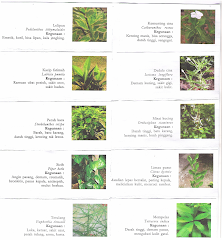
herba Kacip Fatimah
hempedu beruang
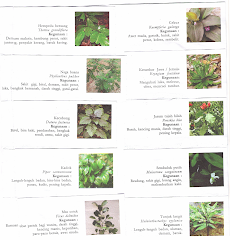
hempedu beruang
hempedu bumi

hempedu bumi
herba misai kucing

herba misai kucing
herba tongkat Ali
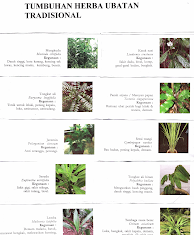.png)
Tongkat Ali
Ulama'

Ulama'
kapal terbang milik kerajaan negara ini yang dipakai pemimpin negara

kapal terbang
Adakah Insan ini Syahid

Syahid
Tok Ayah Haji Ismail

Saifuddin bersama Zakaria

Dinner....
Sukacita Kedatangan Tetamu
Pengikut
Kalimah Yang Baik

Ubi Jaga
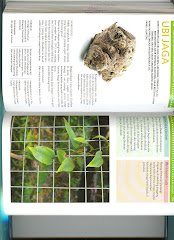
Ubi Jaga
Arkib Blog
Burung Lang Rajawali

Chinese Sparrowhawk
Kelicap Mayang Kelapa
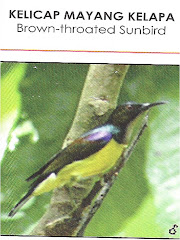
Brown-Throated Sunbird
Kopiah

Pokok Damar Minyak

Kacip Fatimah
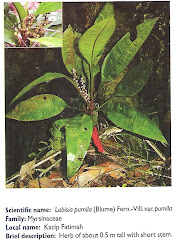
Mengkudu Akar
